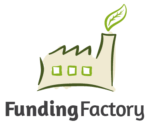Curriculum & Enrichment
- Arts Curriculum (41)
- Character Education (42)
- Creative Youth Development (31)
- English Language Learners (34)
- Environmental Education (58)
- Financial Literacy (38)
- Green Schools (20)
- History/Social Studies Curriculum (59)
- Homework Assistance (30)
- Literacy Curriculum (52)
- Math Curriculum (44)
- Outdoor Education (26)
- Physical Activity Curriculum (40)
- Project-Based Learning (29)
- Service Learning and Volunteer Programs (34)
- STEM Curriculum (83)
- Vocational Training (11)
The National Clearinghouse for Educational Facilities shows recent magazine and journal articles that are relevant to green schools and what they are doing in their communities.
Healthy Green Schools provides information to teachers and administrators about green schools and why they are important.
The GSNN provides all of the news and information about the green schools movement.
The Green Schools Recognition Program encourages cultures of sustainability within school communities. This program recognizes schools for taking a holistic approach to going green that incorporates school ground enhancement, resource conservation, curriculum connections, and community involvement with a school wide commitment and focus on sustainability.
The Green Schools Program empowers students to make a difference in the way their schools use energy. Energy costs are an enormous expense for our nation’s schools, approximately $6 billion each year, and much of the energy that is consumed is wasted. And in many schools, energy costs are second only to personnel costs, exceeding the cost of textbooks and supplies.
The Green Schools Initiative was founded in 2004 by parent-environmentalists who were shocked by how un-environmental their kids’ schools were and mobilized to improve the environmental health and ecological sustainability of schools in the U.S. We believe it is essential to protect children’s health – at school and in the world beyond school – and we work to catalyze and support “green” actions by kids, teachers, parents, and policymakers to:
* Eliminate toxics
* Use resources sustainably
* Create green spaces and buildings
* Serve healthy food, and teach stewardship
The Green Schools Coalition is dedicated to turning schools green and will assist anyone who reaches out to them.
Here, teachers and parents can “tour” a green school and understand why it is beneficial to have a school that is green as well as how to get funding for them.
First envisioned on World Environment Day, June 5, 2007, the GSA was created in response to Mayor Bloomberg’s challenge to New York City institutions to reduce their carbon footprint 30% by 2030. On October 11, 2007, hosted by the Allen-Stevenson School, forty six schools gathered to explore Climate Change and What Schools Can So About It. The Green Schools Leadership Commitment was first introduced to 21c environmental challenges through integrated sustainable and energy-smart solutions and, with support from The Mayor’s Office of Long Term Planning and Sustainability, the National Association of Independent Schools (NAIS), the National Business Officers Association (NBOA), and other local, state, national and global resource partners, the GSA was launched.
Green schools can use this website to raise money for their programs and activities since they are already recycling.
All of EDN’s activities, whether greening schools or promoting green economic policies at home and abroad, inform and energize populations so they will act to secure a healthy future for themselves and their children. With its partner organizations, EDN provides civic engagement opportunities at the local, state, national and global levels. At every turn, EDN works to broaden the definition of “environment” to include all issues that affect our health, our communities and our environment, such as greening deteriorated schools, creating green jobs and investment, and promoting activism to stop air and water pollution.
The U.S. Green Building Council (USGBC) is a nonprofit composed of leaders from every sector of the building industry working to promote buildings that are environmentally responsible, profitable and healthy places to live and work. Our more than 13,000 member organizations and our network of 75 regional chapters are united to advance our mission of transforming the building industry to sustainability.










